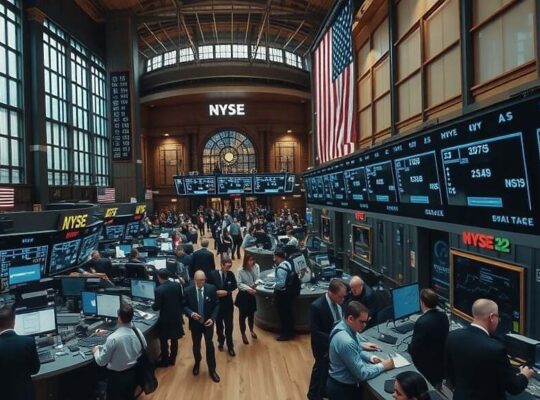“Market Rally Fuels Debate on Fed Policy and Geopolitical Impacts”
U.S. equity markets extended their upward trend for the third consecutive trading day, fueled by optimism surrounding artificial intelligence advancements and growing expectations of imminent interest rate cuts. The Dow Jones Industrial Average closed at 47,112, marking a 1.4% increase from the previous day’s close. The S&P 500 gained 0.9% to reach 6,766, while the Nasdaq 100 climbed 0.6% to 25,018.
While analysts point to progress in the burgeoning AI sector – particularly impacting tech stocks – the prevailing bullish sentiment is inextricably tied to the Federal Reserve’s monetary policy. The market’s sensitivity to signals of a potential rate reduction underscores concerns about a slowing economy despite robust indicators. Critics argue that premature easing could exacerbate inflationary pressures, potentially undermining the Fed’s credibility and triggering a subsequent corrective market downturn.
Equally significant is the impact of ongoing, albeit discreet, diplomatic efforts aimed at de-escalating the conflict in Ukraine. Though details remain scarce, the mere suggestion of progress towards a resolution has been interpreted by investors as a reduction in geopolitical risk, a factor that has weighed heavily on global markets for over two years. This has triggered a complex dynamic: while a genuine resolution would undoubtedly be a positive development, the current market response highlights the dangers of overly optimistic speculation. Any perceived backsliding in negotiations could swiftly reverse the recent gains.
The euro strengthened to $1.1572 against the dollar, reflecting a degree of investor confidence in the Eurozone’s economic outlook, though the sustainability of this appreciation remains contingent on the diverging economic trajectories of the U.S. and Europe.
Commodity markets presented a more mixed picture. Gold prices experienced a slight decline, settling at $4,132 per ounce, reflecting a potential shift in investor appetite as risk sentiment improves. A more pronounced drop was observed in the oil market, with Brent crude falling to $62.60 per barrel, a 1.2% decrease. This decline underscores the ongoing pressure on energy prices and could complicate efforts to manage inflation, particularly if geopolitical tensions re-escalate, potentially disrupting supply chains. This volatility further complicates the Federal Reserve’s balancing act between stimulating growth and controlling inflation.












